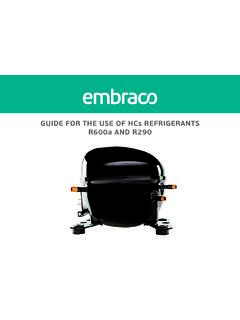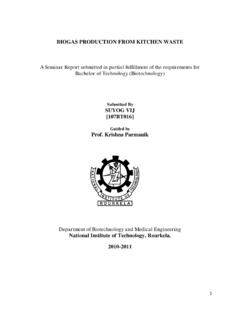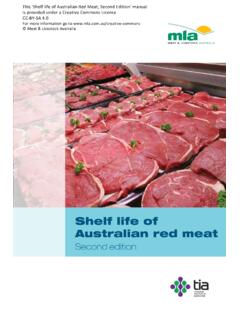Transcription of Personal Protective Equipment (PPE) in Confined Spaces
1 Personal Protective Equipment (PPE) in Confined Spaces 1. Overview a. Employee Training with PPE b. Identify different types of eye protection and their uses c. Evaluate the different types of face protection d. Understand the uses and limitations of head protection e. The usage characteristics of welding Protective gear f. Choosing the right foot protection g. Identify different types of hand protection h. Identify body protection and describe its uses i. Understand hearing protection j. Identifying the usage and limitations of various respirators k. Describe fit testing, medical evaluation, and their importance l. How to clean, care for, and store the respirator m. Identify fall protection systems such as PFAS n. Identify the different types of ventilation 2. Employee Training with PPE a. Each employee shall be trained to know at least the following: i.
2 When PPE is necessary. ii. What PPE is necessary. iii. How to properly don, doff, adjust, and wear PPE. iv. Limitations of the PPE. v. Proper care, maintenance, useful life, and disposal of the PPE b. Protective Equipment shall provide adequate protection against the particular hazards for which they are designed. Also: i. Be of safe design and construction for the work to be performed. ii. Be reasonably comfortable when worn under the designated conditions. iii. Fit snugly and not unduly interfere with the movements of the wearer. iv. Be durable. v. Be capable of being disinfected and cleaned if reusable. vi. Be distinctly marked to facilitate identification only of the manufacturer c. Hazard Assessment 3. Eye Protection i. Safety Glasses 1. Characteristics a. , or b. The lenses of safety spectacles are designed to resist moderate impact from flying objects and particles.
3 C. Side shields provide angular protection from impact hazards in addition to frontal protection. ii. Safety Goggles 1. Characteristics a. , or b. Safety goggles lenses are designed and tested to resist moderate impact. c. Safety goggle frames must be properly fitted to the worker's face to form a Protective seal around the eyes. d. Ventilated goggles allow air circulation while providing protection against airborne particles, dust, liquids, or light. iii. Incorporating prescription into the design of PPE 1. Workers who wear prescription glasses must also wear required eye protection a. Eye and face protection that fits comfortably over glasses is available. b. Safety goggles and spectacles may incorporate prescription lenses. 2. Dust and chemicals present additional hazards to contacts wearers. a. OSHA recommends that workers have an extra pair of contacts or eyeglasses in case of contact failure or loss.
4 4. Face Protection a. Face Shield i. Characteristics 1. Face shield windows extend from the brow to below the chin and across the entire width of the face. 2. Headgear supports the window shield and secures the device to the head 3. Face shield windows are made with different transparent materials and in varying degrees or levels of thickness. These levels should correspond with specific tasks 5. Head Protection a. Protective helmets or hard hats should do the following: i. Resist penetration. ii. Absorb the shock of a blow. iii. Protect against electrical shock iv. Be water-resistant and slow burning. v. Have clear instructions explaining proper adjustment and replacement of the suspension and headband vi. ANSI , 2003 or 1997 b. Head Protection Classes i. Class A 1. Provide impact and penetration resistance along with limited voltage protection (up to 2,200 volts) 2.
5 Also known as class G or general purpose ii. Class B 1. Provide the highest level of protection against electrical hazards, with high-voltage shock and burn protection (up to 20,000 volts). They also provide protection from impact and penetration hazards by flying/falling objects 2. Also known as class E or electrical iii. Class C 1. Provide lightweight comfort and slight impact protection but offer no protection from electrical hazards. iv. Bump Hat 1. Use in areas with low head clearance. They are recommended for areas where protection is needed from head bumps and lacerations 2. These are not designed to protect against falling or flying objects and are not ANSI approved. 6. Welding Protective Gear a. Welding Helmets i. Shade Scale (review charts and scales) b. Welding Gloves i. Leather ii. Heat resistant iii. The hands should be protected with leather gauntlet gloves c.
6 Foot Protection i. A pair of high top leather shoes, preferably safety shoes, is good protection for the feet. If low shoes are worn the ankles should be protected by fire resistant leggings ii. Metatarsal guards d. Sleeves i. Leather sleeves without cuffs in them are the preferred choice when welding ii. The leather is fire resistant 7. Foot Protection a. Steel Toes i. Z41-1999 or 1991 b. Special Purpose i. Electrically conductive shoes- protect against build up of static electricity ii. Electric hazard- nonconductive protect against completing a electrical circuit iii. Foundry- insulated from extreme heat c. Examples of situations in which an employee should wear foot and/or leg protection include: i. When heavy objects such as barrels or tools might roll onto or fall on the employee s feet ii. Working with sharp objects such as nails or spikes that could pierce the soles or uppers of ordinary shoes iii.
7 Exposure to molten metal that might splash on feet or legs iv. Working on or around hot, wet or slippery surfaces v. Working when electrical hazards are present d. Care of Protective Footwear i. As with all Protective Equipment , safety footwear should be inspected prior to each use. ii. Shoes and leggings should be checked for wear and tear at reasonable intervals. This includes looking for cracks or holes, separation of materials, broken buckles or laces. iii. The soles of shoes should be checked for pieces of metal or other embedded items that could present electrical or tripping hazards. iv. Employees should follow the manufacturers recommendations for cleaning and maintenance of Protective footwear. 8. Hand Protection (Gloves) a. The following are examples of some factors that may influence the selection of pr otective gloves for a workplace: i.
8 Type of chemicals handled. ii. Nature of contact (total immersion, splash, etc.). iii. Duration of contact. iv. Area requiring protection (hand only, forearm, arm). v. Grip requirements (dry, wet, oily). vi. Thermal protection. vii. Size and comfort. viii. Abrasion/resistance requirements. b. Gloves made from a wide variety of materials are designed for many types of workplace hazards. In general, gloves fall into four groups: i. Gloves made of leather, canvas or metal mesh ii. Fabric and coated fabric gloves iii. chemical - and liquid-resistant gloves iv. Insulating rubber gloves c. Care of Gloves i. Protective gloves should be inspected before each use to ensure that they are not torn, punctured or made ineffective in any way. ii. A visual inspection will help detect cuts or tears but a more thorough inspection by filling the gloves with water and tightly rolling the cuff towards the fingers will help reveal any pinhole leaks.
9 Iii. Gloves that are discolored or stiff may also indicate deficiencies caused by excessive use or degradation from chemical exposure. 9. Body Protection a. The following are examples of workplace hazards that could cause bodily injury: i. Temperature extremes ii. Hot splashes from molten metals and other hot liquids iii. Potential impacts from tools, machinery and materials iv. Hazardous chemicals. b. Protective clothing comes in a variety of materials, each effective against particular hazards, such as: i. Paper-like fiber- used for disposable suits provide protection against dust and splashes. ii. Treated wool and cotton adapts well to changing temperatures, is comfortable, and fire-resistant and protects against dust, abrasions and rough and irritating surfaces. iii. Duck is a closely woven cotton fabric that protects against cuts and bruises when handling heavy, sharp or rough materials.
10 Iv. Leather is often used to protect against dry heat and flames. v. Rubber, rubberized fabrics, neoprene and plastics protect against certain chemicals and physical hazards. c. When chemical or physical hazards are present, check with the clothing manufacturer to ensure that the material selected will provide protection against the specific hazard. 10. Hearing Protection a. Employee exposure to excessive noise depends upon a number of factors, including: i. The loudness of the noise as measured in decibels (dB). ii. The duration of each employee s exposure to the noise. iii. Whether employees move between work areas with different noise levels. iv. Whether noise is generated from one or multiple sources. b. Generally, the louder the noise, the shorter the exposure time before hearing protection is required. For instance, employees may be exposed to a noise level of 90 dB for 8 hours per day c.














